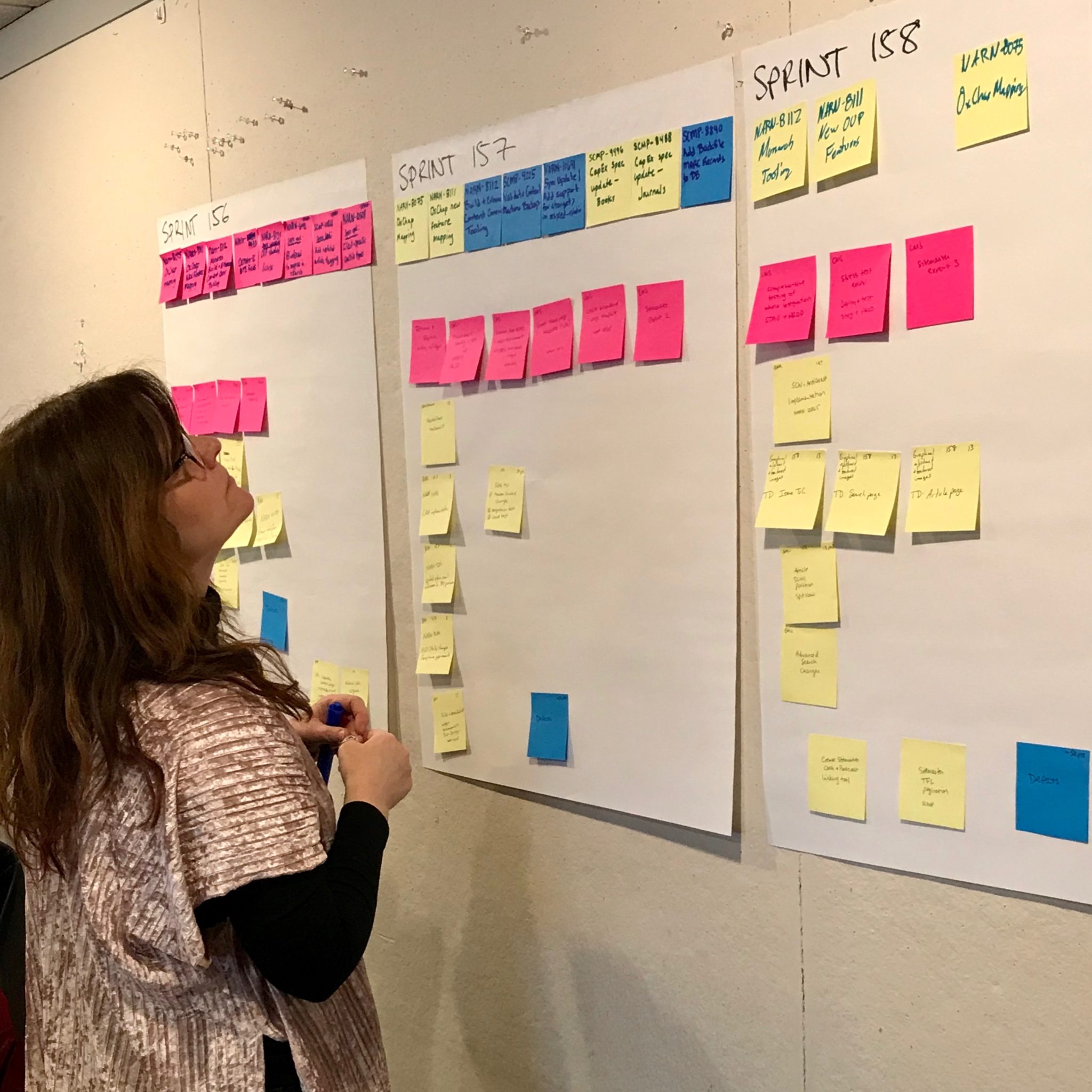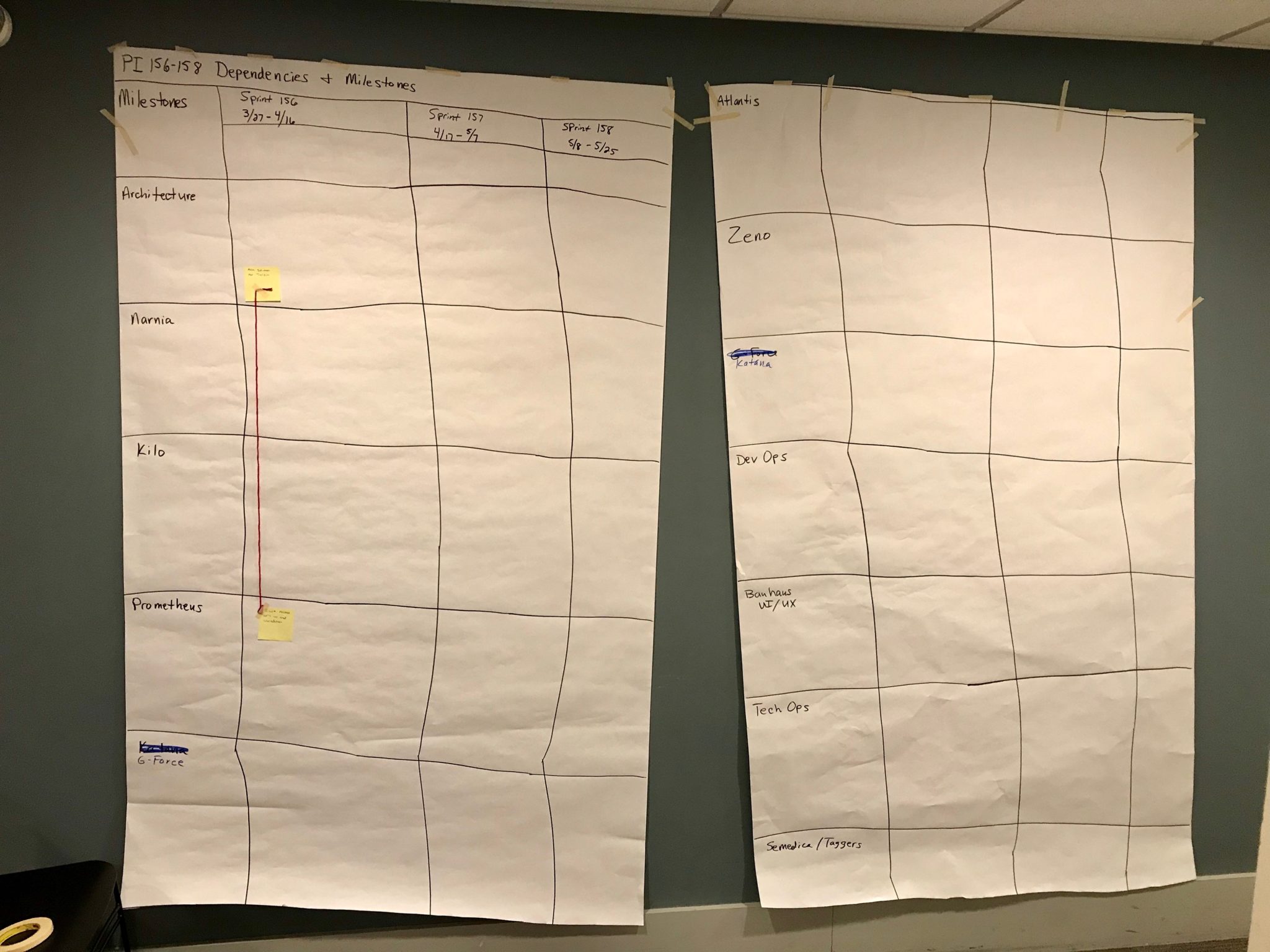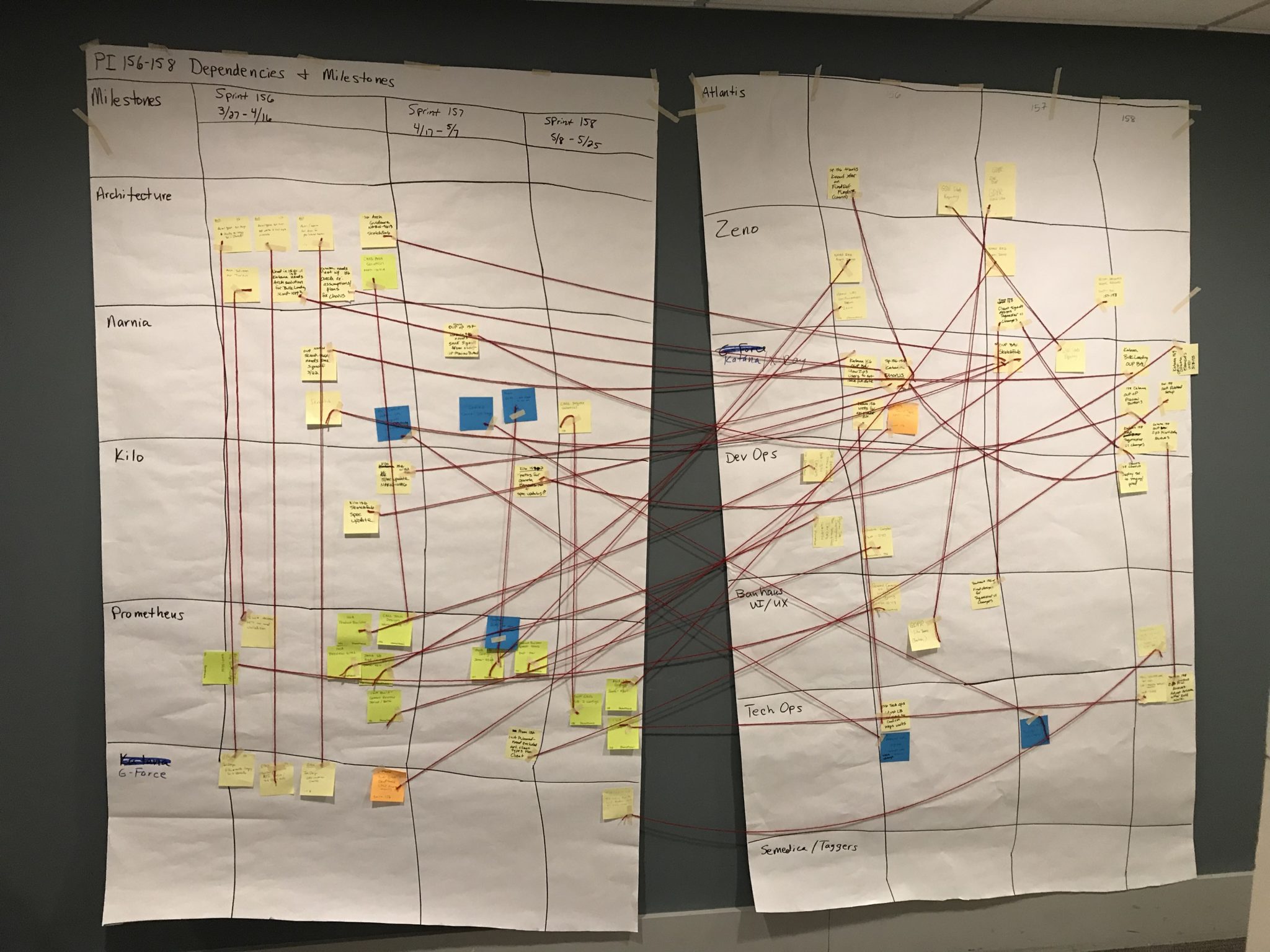In 2018 we are building on this foundation by introducing formal Program Increments (PIs) and PI Planning into our sprint (3-week) cadence. At Silverchair, a Program Increment is a 3-sprint cycle preceded by a 2-week planning sprint to enable longer-term prioritization and planning. Silverchair’s previous operating model allowed visibility to the current and next sprint activity but was limited for planning beyond the 2-sprint cycle. The extended duration of the Program Increment allows for a manageable planning horizon to align teams' capacity, business scope, and delivery value.

Sprint-by-sprint mapping
The benefits of Program Increments
Longer-range planning during the PI Planning sprint allows Silverchair more focused time to ensure identification and coordination of cross-team dependencies and risk management. PI Planning sprints provide dedicated time for non-development activities (such as training, regression testing, and managing cross-team, cross-program, and platform dependencies), allowing sprints themselves to provide more efficient development output. So far, these Program Increments have allowed for greater visibility and smoother execution.Planning Sessions
During each PI Planning sprint are 2 days of planning sessions, which ensure alignment between business, program/client, and team objectives. Playing off of the Scaled Agile Framework (SAFe) concept of defining an Agile Release Train, there is also an informal competition to see how many train analogies or puns we could make (answer: there are a coal car load of possibilities).Presentations by Executives, Product Delivery Managers, Architecture, and Technology provide visibility into the overall business context and program-level and technology improvement goals. That knowledge then powers team break-out sessions that provide an opportunity for cross-team, face-to-face conversations that drive real-time collaboration and enhanced understanding of risks. The Product Owners present the resulting draft team Program Increment plans, highlighting risks and strategies for addressing them for further consideration by the wider group.


Dependencies mapping, before & after
What We’ve Seen So Far and What We’re Expecting
At its essence, PI Planning formalizes what many teams already attempt on an ad hoc, project-by-project basis by dedicating the time and effort to review plans together across teams and ensure a shared understanding of the business value of all objectives and the potential impacts on each other. Rather than what at times can feel like tunnel vision on an individual team's goals for a sprint or perhaps two in advance, Silverchair aims to broaden its collective view for the benefit of our clients and our platform. The PI Planning sprint also allows time for review of our progress and identification of new ideas to try in the spirit of continuous learning and improvement. 
Inter- and intra-team collaboration took place over two days of planning
Quotes from Silverchair Employees:
- “6 days of emails resolved in 20 minutes!”
- “I’ve been excited by the cross-team collaboration and information that helps to tie team-level commitments to the larger vision of where the company is heading."
- “I really enjoyed the presentations of high-level Program Increment objectives from the Product Delivery Managers. It’s a great way to get updates on what other teams are working on around the company.”
- “I enjoyed being able to interact and talk with people working at all levels within Silverchair and gaining a better understanding of the work that each person does to help the organization.”
- “The business context was especially useful to me. I enjoyed gaining a new perspective on how Silverchair solutions meet client needs and how the development roadmap will continue to help them.”
- “Team collaboration and communication are at their finest during the PI planning sessions. Transparency across the organization has improved tremendously because of PI planning.”
Further Reading:
If you're interested in learning more on the background of program increments, we welcome you to explore further within the Scaled Agile Framework (SAFe) site. More:- Scaling agile in the enterprise with SAFe and Jira Agile
- Enterprise Backlog Structure and Management
- SAFe Vision
- 6 Ways to Create an Amazing Agile Team
Laura Spigone, Director, Agile Governance
Jane McQueen, Senior Director, Scrum Masters, and Release Train Engineer